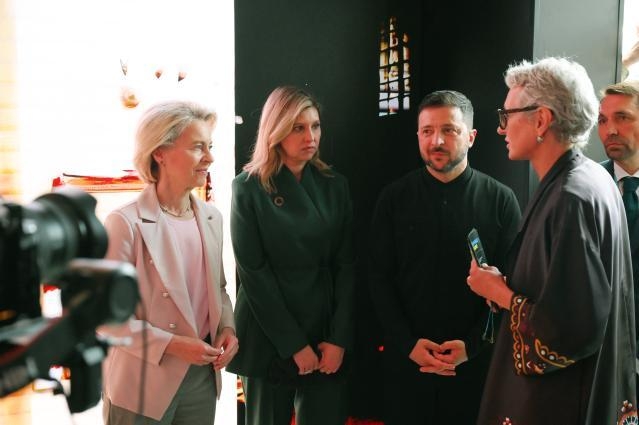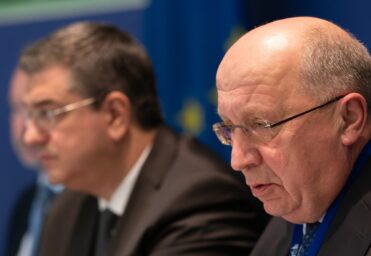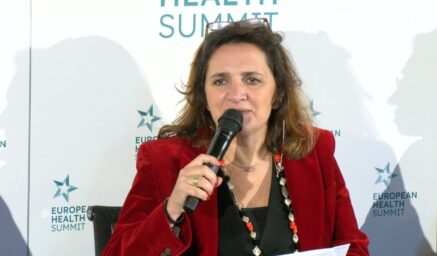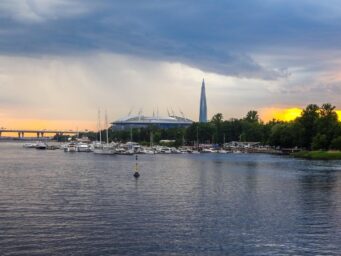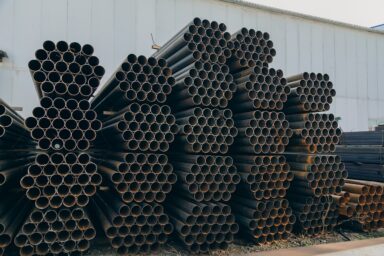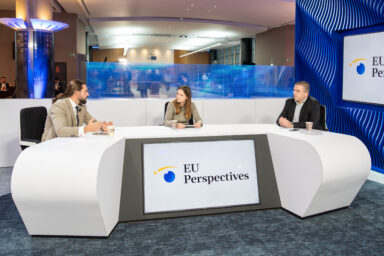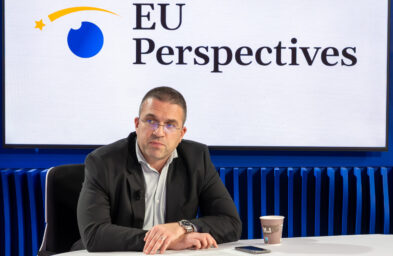The European Union has announced a €2.3bn investment package aimed at helping Ukraine in its recovery efforts even as the country continues to be buffeted daily by Russian attacks.
The announcement on Thursday came as Commission President Ursula von der Leyen took part in an important two-day summit in Rome, the fourth of its kind, to drum up investment for Ukraine in the face of the continuing conflict. The Italian prime minister, Giorgia Meloni, as well as Ukraine’s President Volodymyr Zelenskyy and his wife Olena, were in attendance.
Making a difference
In her speech, Ms Von der Leyen described how the EU had backed Ukraine from Day 1 after Russia launched its campaign. She reiterated that the EU would continue to support Ukraine for “as long as it takes,” before discussing recovery and the help the EU had pledged.
“Since the full-scale invasion, Europe has been and is Ukraine’s largest donor – with almost EUR 165bn of support. This year alone we will cover 84 per cent of external financing needed. As part of this support, I can announce EUR 1bn payment in macro-financial support as well as a payment of more than EUR 3bn from the Ukraine Facility. The guarantees and grants that we are signing at this Conference are set to unlock up to EUR 10 billion in investments for growth, recovery and reconstruction.”
The European funding is meant to help the embattled Ukraine back on its feet, before or once a ceasefire or lasting peace is achieved. A central component of the plan is the establishment of the European Flagship Fund for the Reconstruction of Ukraine. Backed by the European Commission and several EU member states, the fund starts with €220m in capital and aims to raise €500m by 2026. Its goal is to foster Ukraine’s private equity market and promote sustainable economic growth.
You might be interested
Key components of the recovery package
The investment package focuses on several key areas:
Support for Small and Medium Enterprises (SMEs): €500m is allocated to assist SMEs, including startups and businesses employing veterans and displaced persons.
Strategic Investments: €600m is designated for large-scale private sector projects in energy, transport, and manufacturing.
Municipal Infrastructure: €520m aims to rebuild healthcare facilities, housing, and urban mobility in war-affected areas.
Energy Security and Green Transition: €265m will stabilise Ukraine’s energy grid and enhance renewable energy capacity.
Critical Infrastructure: €310m is dedicated to repairing essential infrastructure, including hospitals and housing.
To date, EU commitments under the Ukraine Investment Framework total €5.7bn, and are expected to leverage over €18bn in investments. Additionally, the European Commission plans a fourth disbursement of up to €3.05bn under the Ukraine Facility, alongside continued macro-financial assistance. Beyond financial support, the EU is assisting Ukraine in strengthening its institutions and promoting long-term sustainability. Initiatives include the EU4Reconstruction programme and Ukraine’s association with the Erasmus+ education scheme, which reinforces long-term cooperation.
Ukraine’s resilience amid an unrelenting war
The €2.3bn package arrives at a crucial moment as Ukraine continues to grapple with the devastating effects of Russia’s full-scale invasion. Despite progress on the battlefield, the war drags on, causing widespread destruction and loss of life.
Financial aid remains vital but is just one part of a complex puzzle. Reconstruction depends not only on money but also on the security situation, political stability, and effective governance. The ongoing conflict challenges all of those factors.
President von der Leyen underscored this point, describing the EU not just as a donor but as a partner. One that has invested in Ukraine’s long-term growth, governance reforms, and societal resilience. The way forward is through long-term cooperation. But none of it would have been possible if not for Ukraine’s resolve, suggesting Ukrainians had beaten back overwhelming odds:
“Ukraine’s military has done what many said was impossible – holding back the Russians and crippling their navy and bomber fleet. Ukraine is the frontier of military innovation. But Russia’s arms race continues. This is a war of resources and competing defence systems, as much as a war of values. So, we must continue to invest in Ukraine’s defence and tech primacy. Our Defence Readiness 2030 plan will be key. It will make available the necessary resources and fiscal space to deliver a surge in military capacity. And it will boost investment in Ukraine’s defence capabilities.”
Continuing commitment
The EU’s commitment to supporting Ukraine has come under renewed focus following the election of Donald Trump to a second term as US president. Over recent months, his administration attempted to persuade his Russian counterpart to engage in negotiations—so far, with limited progress. This week, however, the White House signaled a shift: Trump approved the delivery of 10 Patriot missiles and ordered a resumption of US weapons shipments to Ukraine, which had been briefly paused by the Pentagon.
The €2.3bn package unveiled in Rome on Thursday focuses on reconstruction and economic recovery. It does not include funding for weapons or military equipment. While the EU continues to support Ukraine’s defence through separate initiatives—such as the European Peace Facility and the ReArm Europe Plan—these are entirely distinct from the Ukraine Investment Framework. While the funding and political will signalled at the Rome conference are significant, Ukraine’s road to recovery remains challenging and uncertain. Continued international support, flexibility, and attention will be essential as the country rebuilds amidst conflict and prepares for a future increasingly linked to Europe.
